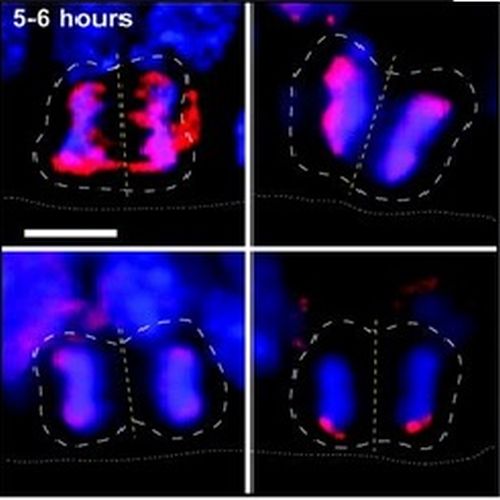Nonselective sister chromatid segregation in mouse embryonic neocortical precursor cells.
We have investigated whether the precursor cells that give rise to the neurons of the neocortex during mouse embryonic development segregate sister chromatids nonrandomly upon mitosis, as would be predicted by the immortal strand hypothesis. Using various protocols of 5-bromo-2-deoxyuridine (BrdU) labeling and chase, we were unable to detect BrdU label-retaining neocortical precursor cells at any of the embryonic stages analyzed, even when the entire brain was analyzed by serial sectioning. Analysis of mitotic neuroepithelial and radial glial cells revealed BrdU-labeled sister chromatid segregation to both nascent daughter cells, which showed a mirror-symmetrical pattern in the first and a non-mirror-symmetrical pattern in the second division after BrdU labeling. Taken together, our data are incompatible with embryonic neocortical precursor cells segregating the sister chromatids selectively to one daughter cell upon mitosis and hence argue against the existence of immortal DNA strands in these cells. In light of the previously reported existence of immortal DNA strands in adult neural stem cells, we discuss that either 1) embryonic and adult neural stem cells in the cortex are distinct or 2) that most, if not all, of the embryonic precursor cells to neocortical neurons are progenitor cells rather than true neural stem cells.

- Cereb. Cortex 2009 Jul 02;19 Suppl 1:i49-54
- 2009
- Neurobiology
- 19342402
- PubMed
Enabled by:
